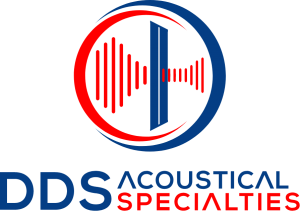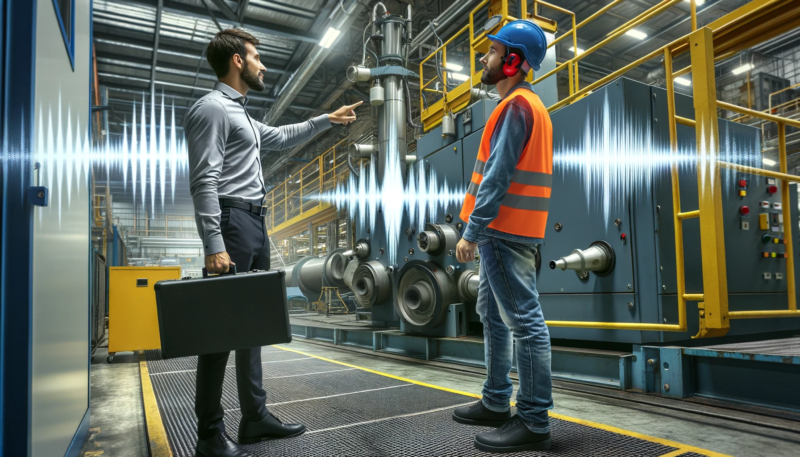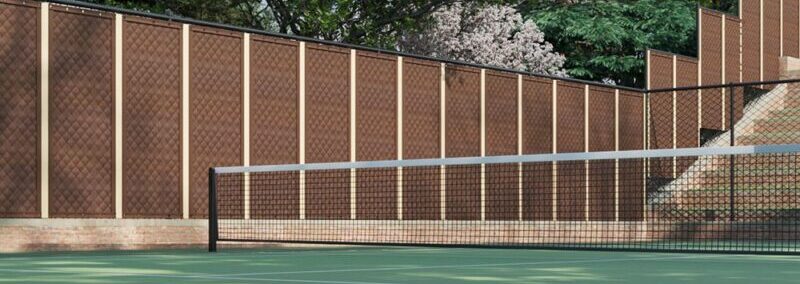
CNC Machine Noise Enclosure – The Key to a Safer and Quieter Workplace
Many contemporary companies and workshops rely heavily on CNC equipment because they can perform precise cutting and shaping. They can, however, produce a lot of noise, which makes them a possible source of pain and hearing loss for workers. A CNC machine noise enclosure may be a helpful remedy in this situation.
A CNC Machine Noise Enclosure Is What, Exactly?
A soundproofing structure called a CNC machine noise enclosure lessens the noise produced by CNC machines. Usually constructed of high density noise barriers and sound-absorbing materials, the enclosure is intended to block, dampen and absorb the sound waves produced by the equipment. By doing this, the effect of noise on nearby workers is reduced.
CNC Machine Noise Enclosure Types
CNC machine noise enclosures come in a variety of designs, including:
Curtain Panel Enclosures: Supporter by a metal frame and hung on single or double track systems, curtain panel enclosures offer cost effective solution. Walls of the curtain panel enclosure are made of 1 or 2lb per square foot mass loaded vinyl barrier. This barrier has an STC (Sound Transmission Coefficient) of up to 32. This means it can block a considerable amount of noise. For additional results panels can include absorbers to further reduce noise. These enclosures may be designed to fit a variety of CNC machine sizes and are simple to install.
Metal Wall Enclosures: Made of metal panels, metal wall enclosures are intended to be more durable than curtain panel enclosures. In high-volume manufacturing settings where the CNC machine is always in use, they are frequently employed. Metal Wall Enclosure also offer increased noise reduction. They are extremely useful for very loud machine over 100db.
Custom Enclosures: Custom enclosures can be made to meet the unique requirements of a CNC machine and the environment in which it operates. This makes it possible to create a solution that is specifically suited to the needs of noise reduction. Custom Enclosure are made from a combination of acoustic products and account for all needs of a machine.
Selecting and Designing an Enclosure
There are a number of things to take into account while selecting a CNC machine noise enclosure, including:
Size: The enclosure’s size should be chosen to complement that of the CNC machine. By doing this, the enclosure will be optimized for the machine’s particular noise-reduction needs.
Desired Noise Reduction: Depending on the desired noise reduction in a space, you may need a product with higher STC (Sound Transmission Coefficient). The design and use of a particular product is extremely important when calculation how much noise a system can stop.
Sound absorption: The ability of the materials to absorb sound should be taken into consideration while choosing them for the enclosure. The materials’ NRC (Noise Reduction Coefficient) ratings can be used to assess how well they absorb sound. The addition of sound absorption to an enclosure can make a significant impact on the overall noise reduction and transmission.
Durability: The enclosure needs to be strong enough to withstand the pressures placed on it by the CNC machine and the manufacturing environment. This will guarantee that the enclosure’s ability to reduce noise will hold true over time.
Cost: The cost of the enclosure should be taken into account, as well as the potential long-term cost savings by lessening the effect of noise on employees and the surrounding area.
Conclusion
The noise produced by CNC machines is effectively reduced with a noise enclosure for CNC machines. There is a solution to fit the unique requirements of each CNC machine and its environment, including alternatives like curtain panel enclosures, metal wall enclosures, and custom enclosures. You may choose the ideal CNC machine noise enclosure to create a quieter and more comfortable workspace by taking into account elements such as size, sound absorption, durability, and cost.
At DDS Acoustical Specialties we help you and your team choose the best type of enclosure, and design it with all your requirements.
-
April 11, 2024
Acoustic Improvements at Provincetown Public Library
-
November 16, 2023
How to Soundproof a Room
-
September 26, 2023
Quieting the Racket: Understanding Pickleball Noise and Effective Solutions




